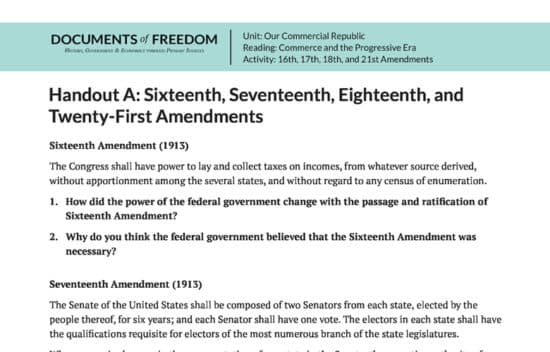



Constitutional Amendments Playlist
20 items
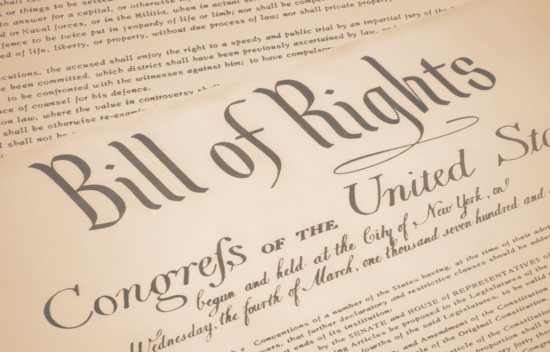
Bill of Rights: 10 Amendments
Primary Source - 821 Words
Primary Source
821 Words
The first 10 amendments to the Constitution make up the Bill of Rights. James Madison wrote the amendments, which list specific prohibitions on governmental power, in response to calls from several states for greater constitutional protection for individual liberties.
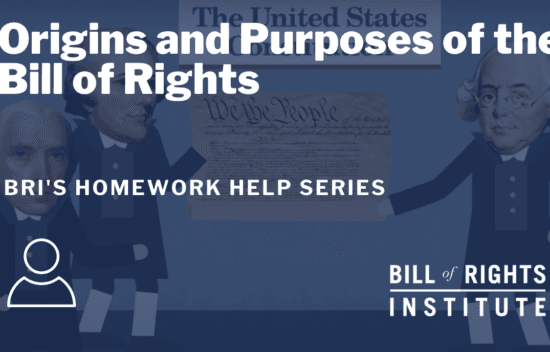
Origins and Purposes of the Bill of Rights | BRI’s Homework Help Series
Video
Video
6 Min
Why did the Founders see the need to create a Bill of Rights in addition to the US Constitution? What historical documents and events influenced them as they drafted it? The Virginia Declaration of Rights written by James Madison, the Magna Carta, the Petition of Rights, the English Bill of Rights, and the Massachusetts Body of Liberties.
The Founders included both concepts of democracy and republic in the blueprint for American government. Democracy protected majority rule whereas the idea of a republic protected individual citizens. The Bill of Rights was an important addition to the Constitution because it helped to guarantee individual rights. As a fluid document, inclusions to the Bill of Rights like the 14th Amendment brought the idea of incorporation, the process of states being held liable to uphold the Bill of Rights on the state level.
This latest installment in our Homework Help series explores these important constitutional questions.
6 Min

The Bill of Rights – Docs of Freedom
Lesson - 6 Activities
Lesson
6 Activities
The Anti-Federalists had many objections to the Constitution, and one of them was that it did not have a bill of rights. Madison was worried that listing some rights would leave those rights that weren’t listed more vulnerable to infringement. But Jefferson put aside Madison’s concerns about the risks of a partial listing of rights, arguing, “Half a loaf is better than no bread. If we cannot secure all our rights, let us secure what we can.” Amid the drama of the ratification debate, Madison promised to introduce amendments in Congress. The Bill of Rights, a list that would serve to clarify and emphasize the limited nature of the national government, was ratified and added to the Constitution in 1791.

The Reconstruction Amendments: Thirteenth Amendment, 1865, Fourteenth Amendment, 1868, and Fifteenth Amendment, 1870
Activity
Activity
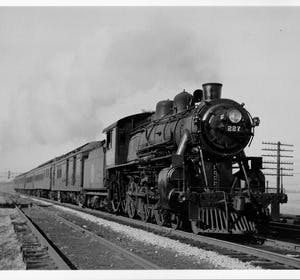
The Fourteenth Amendment and Incorporation
Lesson - 5 Activities
Lesson
5 Activities
80 Min
The Bill of Rights, setting limitations on Congress, originally applied only to the national government. In the effort to protect individual rights of the freedmen, the Fourteenth Amendment was ratified in 1868. It differs from every previous amendment because it limits what state governments may do. Over the next seventy-five years, the Court’s use of the Fourteenth Amendment increased. It used the Due Process clause in that amendment to strike down many state laws and to selectively incorporate parts of the Bill of Rights into the Fourteenth Amendment so as to make them apply to states as well as the federal government. This practice, known as “incorporation,” increased the Supreme Court’s power to define rights for the entire Union, and reduced the power of the states as compared to federal power. It also reduced the power of Congress as opposed to the Supreme Court, to define which rights are properly constitutional. This changed the meaning of the Bill of Rights from a series of limits on government power to a set of rights belonging to the individual and guaranteed by the federal government.
80 Min

Women’s Suffrage and the Nineteenth Amendment
Lesson - 2 Activities
Lesson
2 Activities
75 Min
Use this Lesson with Alice Paul and the Struggle for Women's Suffrage Narrative, the Elihu Root vs. William Jennings Bryan on Women's Suffrage, 1894-1914 Primary Source, and the Carrie Chapman Catt, Open Address to the U.S. Congress, 1917 Primary Source to further explore the journey of the women's suffrage movement.
75 Min

First, Fourth, and Fifth Amendments
Video
Video
78 Min
Join Professor Artemus Ward of NIU and DFW Debate for a webinar on the First Amendment, the Fourth Amendment, and the Fifth Amendment.
78 Min
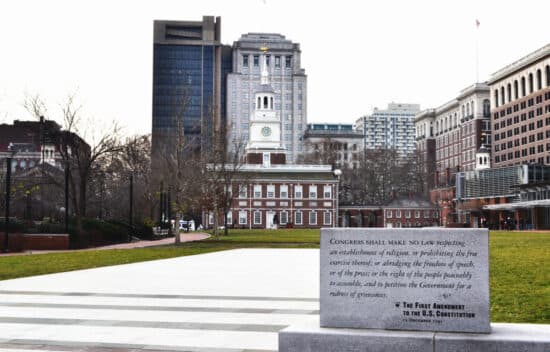
The Constitution, the First Amendment, and Religious Liberty
Lesson - 5 Activities
Lesson
5 Activities
40 Min
How did leading Founders and religious dissenters contribute to religious liberty in America? Analyze primary source documents concerning the relationship between church and state, assess arguments for and against an established religion and a public role for religion in civic life and gain an appreciation for the philosophical and political process of the American experiment in religious liberty.
40 Min
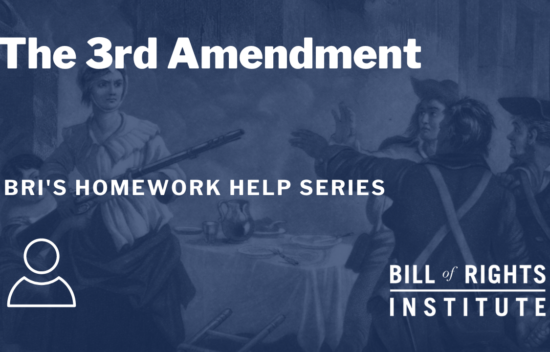
The Third Amendment | BRI’s Homework Help Series
Video
Video
7 Min
Why did the Founders believe so strongly that troops should not be quartered in the homes of citizens that they enshrined this protection in the Bill of Rights? The Third Amendment is rarely talked about, but studying its origins and purposes is important in order to understand our system of the relationship between civilians and the military. Learn more about the story of the Third Amendment with this Homework Help video.
7 Min
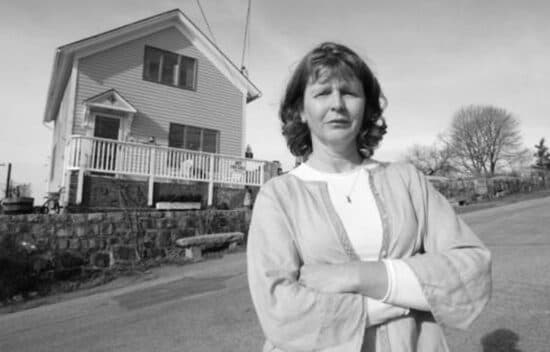
How Does the Fifth Amendment Protect Property?
Lesson - 4 Activities
Lesson
4 Activities
50 Min
The Founders believed that property is among the natural rights governments exist to protect. One of the ways the Founders protected property rights was in the Fifth Amendment. This amendment restricts the government's ability to take property and ensures that when it does take property, it must pay for it. This lesson explores the Fifth Amendment and its applications.
50 Min
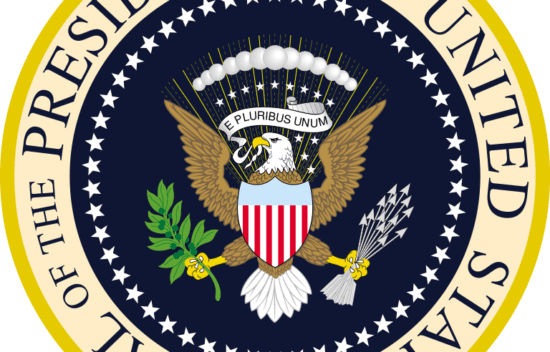
The Twenty-Fifth Amendment
E Lesson
E Lesson
20 Min
At the White House ceremony that certified the ratification of the Twenty-Fifth Amendment, President Lyndon Johnson noted that
“It was 180 years ago, in the closing days of the Constitutional Convention, that the Founding Fathers debated the question of Presidential disability. John Dickinson of Delaware asked this question: "What is the extent of the term 'disability' and who is to be the judge of it?" No one replied."

Freedom of the Press | BRI’s Homework Help Series
Video
Video
6 Min
What do you think of when you hear the words "free press"? The Founders believed the freedom of the press was an important bulwark in a free society. Learn more about the history of the First Amendment as well as some landmark Supreme Court cases involving press freedom with this Homework Help video.
6 Min
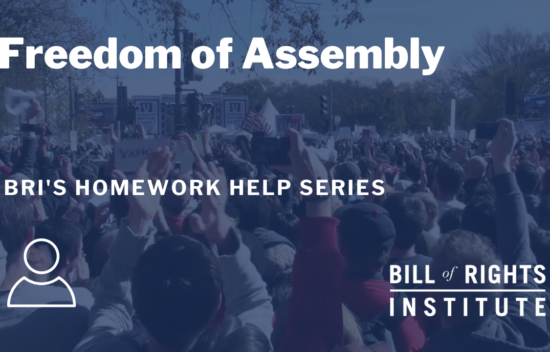
Freedom of Assembly | BRI’s Homework Help Series
Video
Video
6 Min
Why is the freedom of assembly an essential right in a free society? Our Homework Help video explores why the Founders included it in the 1st Amendment as well as the landmark Supreme Court cases involving it. Supreme Court cases arguing freedom of assembly debate the protections of the 14th Amendment. Although the Bill of Rights was initially limited to the federal government, incorporation also allows states to be culpable of the protections in the Bill of Rights.
6 Min

Freedom of Speech: General
E Lesson
E Lesson
5 Min
This eLesson features Supreme Court cases that impacted freedom of speech, including a link to Oyez to learn more.
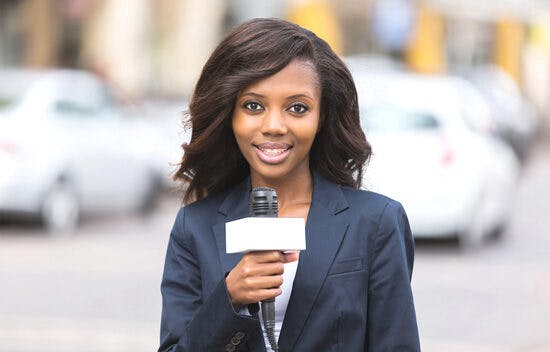
Freedom of the Press
E Lesson
E Lesson
20 Min
Explore various landmark court cases where the right to a free press was tested. Freedom of the Press is essential to the maintenance of free government and is guaranteed by the first amendment. Learn more about this right in the cases below.

Votes for Women
Curriculum - 8 Lessons
Curriculum
8 Lessons
How did the suffragists map out a pathway for change to achieve the vote through the Nineteenth Amendment?


